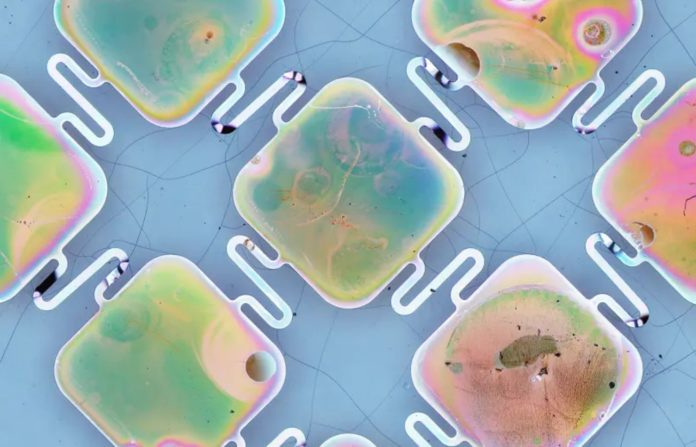Paralysis, numbness, and chronic pain are just some of the impairments that can result from damage to the peripheral nervous system. Even though peripheral nerves can grow back, it takes a long time and doesn’t always work.
Electrical stimulation, whose efficacy has been established in numerous research investigations, is one approach for treating injured nerves. This approach is aggressive and can damage bodily tissues.
Now, a novel compound created through a collaboration between the University of Chicago and the Technion-Israel Institute of Technology in Haifa lays the path for the recovery of damaged nerve tissue and heart pacing via an external light source on the body. The revolutionary invention could mean that electrode transplantation is no longer needed.
How does it work?
When near-infrared shined into the body, it hits a membrane made of the new material. This photo-activates the damaged heart or nerve tissue. The study published in Nature Materials, was directed by Assistant Professor Menahem (Hemi) Rotenberg of the Faculty of Biomedical Engineering at the Technion and Professor Bozhi Tian of the University of Chicago.
A new semiconductor device with a flexible, ultra-thin membrane structure that works well with biological tissues was developed by the researchers. The objective is to wrap this membrane around the injured nerve tissue, or, in the case of cardiac pacing, around the heart. If there is such damage, this step will be performed as part of the surgery that is required in any event.
Rotenberg remarked, this new innovation “is a photovoltaic material that converts light energy into electrical energy that affects nerve tissue” and In the study, “we demonstrated the efficacy of the new substance in two different contexts – heart pacing and the activation of the peripheral nervous system.”
“In the context of heart treatments, for example, the use of such a device can allow temporary cardiac pacing for post-operative rehabilitation,” added the lead author, “and avoid the use of a temporary electrode to be inserted into the heart. Because the membrane we developed is made of a silicon-based material that absorbs in the body without any toxic effect, there is no need for further surgical action to remove it from the body .”
According to him, the new material is a “therapeutic window” that allows the medical team to have an exterior impact on the tissues of the patient’s body.
The material that the team made is unique because it makes a semiconducting diode junction from just one type of silicon. A diode is an electronic part with two ends that mostly sends current in one direction. Given that diodes are often created by fusing two different types of silicon, this property is quite uncommon.
The energy gaps that make up semiconductors are what define how conductible they are. They typically consist of p-type (positively charged) materials, which remove an electron from the material and leave a hole in its place, and n-type (negatively charged) materials, which add an electron to the material. A p-n junction, which is the fundamental component of electronic devices and solar cells, is produced when the two materials are connected.
The discovery is crucial since a diode is solely comprised of p-type silicon and the junction is formed of regular silicon and porous silicon, making the connection between the two materials a particularly challenging technological task.
According to Rotenberg, the new substance was produced by chance. “I accidentally used a metal tweezer in the laboratory that provided iron ions to the solution – something I did not plan to happen. The iron ions turned out to catalyze the creation of nanopores on the surface of silicon .”
The innovation may have applications outside of medicine.
Beyond medicine, the new invention is anticipated to have a substantial impact on a number of applications, such as renewable energy. Energy storage presents a significant obstacle to increasing the use of renewable energy sources because they are unstable and do not operate at a consistent intensity throughout the day, like the sun.
Because the hydrogen produced is a storable energy source, one of the current trends is the synthesis of hydrogen by the decomposition of water with solar light. Rotenberg expects that the new material he and his colleagues created would hasten the creation of solar gadgets that are more sophisticated and effective.
Image Credit: JUDY SIEGEL-ITZKOVICH
You were reading: A New Method Repairs Damaged Nerve Tissue, Heart Using Light Energy
